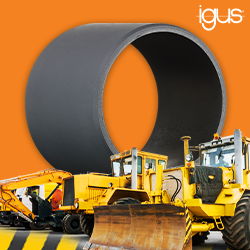How to grow food without light

The agriculture industry relies on photosynthesis to grow food to feed the world. However, the process is slow and requires a lot of resources, making it inefficient to meet the world’s needs.
Feng Jiao, the Elvera & William R. Stuckenberg Professor in the McKelvey School of Engineering at Washington University in St. Louis, along with Robert E. Jinkerson, at the University of California, Riverside, propose a move to an electro-agriculture framework that combines carbon dioxide electrolysis with biological systems to boost food production’s efficiency. Such a system could reduce agricultural land use in the United States by nearly 90% and allow food to be grown in urban areas and deserts without the need for light or pesticides. It also allows farmers to use fertilizer more efficiently.
Jiao, who also is the co-principal investigator of the Carbon Utilization Redesign for Biomanufacturing-Empowered Decarbonization (CURB) Engineering Research Center (ERC) at WashU, said the approach could reduce the environmental impacts of food production, streamline supply chains and address the global food crisis.
Jiao’s ongoing work is to optimize the process of converting carbon dioxide into acetate, which potentially could serve as a feedstock for plants in this system.
Plants can be genetically modified to feed off acetate and photosynthesis, thereby making vertical indoor farming much more energy efficient.
The goal is to eventually engineer plants that can fully rely on acetate as fuel, which could lead to a massive reduction in agricultural land use — land that can instead be put toward conservation and decarbonization.
“Electro-ag would allow for both ecological restoration and natural carbon sequestration at a massive scale,” the authors write.
The method also can be used to produce fuel or biodegradable materials because fungi, yeast and algae also can feed on acetate.
Economic incentives don’t exist for this to replace traditional agriculture anytime soon, but the technology also has the potential to stabilize markets, prevent famine and grow food in inhospitable spaces.
Initial efforts are focused on pursuing high-value crops such as lettuce and tomatoes, the authors wrote, but electro-ag also offers the opportunity to produce egg and dairy proteins from acetate-fueled precision fermentation or for lab-grown meat.
“This technology presents an opportunity to reinvent agriculture from the ground up,” they wrote. “And it must be thoughtfully developed and deployed to avoid perpetuating the inequities that currently exist in today’s global food system.”
Read more about the electro-agriculture system in research published Oct. 23 in Joule, a Cell Press journal.
Crandall, BS, Harland-Dunaway M, Jinkerson RE, Jiao F. Electro-agriculture: Revolutionizing farming for a sustainable future. Joule. Oct. 23, 2024. DOI: 10.1016/j.joule.2024.09.011
Funding for this research was provided by the Bill and Melinda Gates Foundation (INV-051757 and INV-051759).
Comments (0)
This post does not have any comments. Be the first to leave a comment below.
Featured Product

